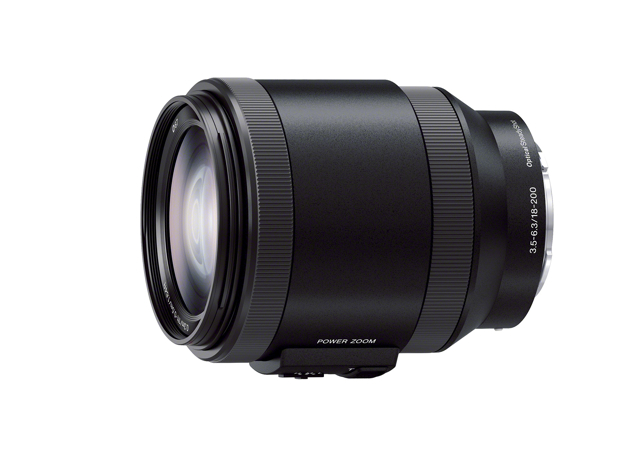
Sony announced that they are introducing two new lenses for their Alpha (α) E-mount system, designed for the NEX-series of mirrorless cameras and camcorders. These new models bring the E-mount lens family up to 13 native lenses. If you include two available converters, the E-mount system has you covered in nearly any photography situation.
The first lens announced is a 20mm F/2.8 “pancake” wide-angle lens. Unlike a normal “barrel” shaped lens, “pancake” lenses maintain a small profile. The new Sony SEL20F28 is only 20mm (about 3/4 of an inch) from front to back and weighs only 2.4 ounces. Due to their small size, these slim lenses create a uniquely portable photography package. Its wide angle of view (30mm on 35mm equivalent) and bright F/2.8 aperture (max) is perfect for shooting landscapes, street scenes, and interiors. This lens is also perfect for shooting HD video as it supports AF for movie capture. The lens has a minimum focus distance of 7.8 inches and accepts 49mm filters. The lens will be available in April 2013 and retail for approximately $350.

The second lens announced is an 18-200mm F/3.5-6.3 OSS (Optical SteadyShot) powered telephoto zoom lens (shown at top and below). The Sony SELP18200 is technically not new, as it was originally offered as a kit lens for the NEX-VG30 camcorder but will now be available as a standalone lens. With a strong 11x magnification range and whisper-quiet operation, this lens is designed with videographers in mind. The lens has a zoom lever that works with a barrel-mounted switch – this allows for three levels of zoom speed, from slow panning to crash zooms. Power zoom can also be controlled directly from NEX-VG900, NEX-VG30, and NEX-FS700 cameras. The OSS feature minimizes camera shake and blur when handholding at slow shutter speeds. Although optimized for video, this lens is also suitable for still photography. The new tele-zoom weighs in at 22.9 ounces, is 4 inches long, and accepts 67mm diameter filters. Sony expects it to be available in March and retail for about $1,200.



